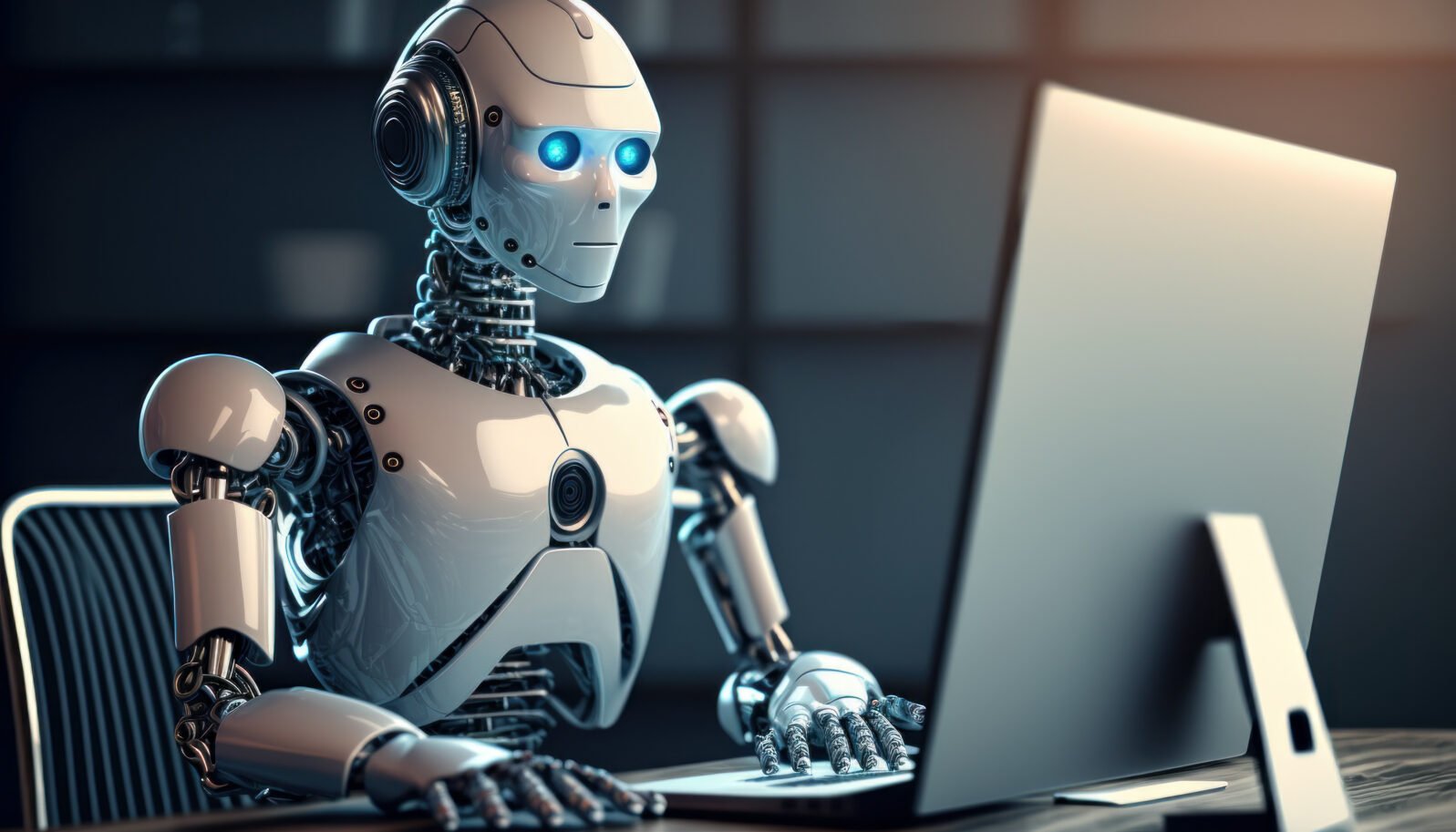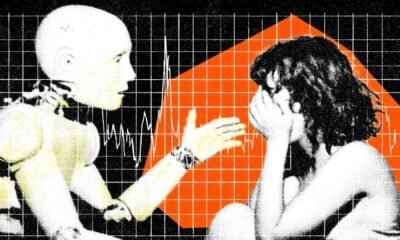AI Research
Congress ramps up push to arm consumer product regulators with AI tools

A move to empower federal consumer product regulators with artificial intelligence tools picked up steam this week with the introduction of a bipartisan Senate bill whose companion has already passed the House.
The Consumer Safety Technology Act from Sens. John Curtis, R-Utah, and Lisa Blunt Rochester, D-Del., calls on the Consumer Product Safety Commission to create a pilot program that uses AI to track product injury trends, identify hazards, monitor recalls and pinpoint which products fall short of critical standards.
The legislation also directs the Federal Trade Commission and the Commerce secretary to deliver a report on blockchain technology and tokens.
“The world is changing fast, and consumer protection must keep pace,” Curtis said in a press release Thursday. “This bill puts the right tools in the hands of experts — employing AI to catch dangerous products before they hurt families, exploring blockchain to strengthen supply chains, and making sure digital tokens don’t become a new avenue for fraud. This is about keeping people safe while helping American innovation thrive.”
The House version of the bill, introduced in March by Rep. Darren Soto, cleared the lower chamber in July. The Florida Democrat said at the time that the legislation would “help make the CPSC more efficient.”
“The reality is, the crooks are already using AI,” Soto said. “The cops on the beat need to be able to use this, too.”
The Senate bill directs the CPSC to seek out a variety of stakeholders to consult on the agency’s AI pilot, including cybersecurity experts, technologists, data scientists, machine-learning specialists, retailers, consumer product safety groups and manufacturers.
Within a year of the pilot’s conclusion, the CPSC would be charged with submitting a report to Congress detailing its findings and data, “including the extent to which the use of artificial intelligence improved the ability of the Commission to advance the consumer product safety mission,” the bill states.
The blockchain section of the bill orders the FTC and Commerce Department to study how the technology can be leveraged to protect consumers by guarding against fraud attempts and other unfair and deceptive practices. There would also be an examination of what federal regulations could be modified to spur blockchain adoption.
A separate report would look into unfair or deceptive acts and practices tied to transactions via digital tokens. A fact sheet from Curtis said that provision is aimed at “ensuring consumers are protected without stifling responsible innovation.”
Blunt Rochester said in a statement that the government “must be able to keep up with new and emerging technologies, especially when it comes to consumer safety.”
“The Consumer Safety Technology Act would allow the Consumer Product Safety Commission to explore using artificial intelligence to further its critical goals,” she continued. “I am grateful to work alongside Senator Curtis on this legislation and look forward to getting it over the finish line.”
AI Research
Study shakes Silicon Valley: Researchers break AI
Study shows researchers can manipulate chatbots with simple psychology, raising serious concerns about AI’s vulnerability and potential dangers.

AI Research
And Sci Fi Thought AI Was Going To… Take Over? – mindmatters.ai
AI Research
Measuring Machine Intelligence Using Turing Test 2.0

In 1950, British mathematician Alan Turing (1912–1954) proposed a simple way to test artificial intelligence. His idea, known as the Turing Test, was to see if a computer could carry on a text-based conversation so well that a human judge could not reliably tell it apart from another human. If the computer could “fool” the judge, Turing argued, it should be considered intelligent.
For decades, Turing’s test shaped public understanding of AI. Yet as technology has advanced, many researchers have asked whether imitating human conversation really proves intelligence — or whether it only shows that machines can mimic certain human behaviors. Large language models like ChatGPT can already hold convincing conversations. But does that mean they understand what they are saying?
In a Mind Matters podcast interview, Dr. Georgios Mappouras tells host Robert J. Marks that the answer is no. In a recent paper, The General Intelligence Threshold, Mappouras introduces what he calls Turing Test 2.0. This updated approach sets a higher bar for intelligence than simply chatting like a human. It asks whether machines can go beyond imitation to produce new knowledge.
From information to knowledge
At the heart of Mappouras’s proposal is a distinction between two kinds of information, non-functional vs. functional:
- Non-functional information is raw data or observations that don’t lead to new insights by themselves. One example would be noticing that an apple falls from a tree.
- Functional information is knowledge that can be applied to achieve something new. When Isaac Newton connected the falling apple to the force of gravity, he transformed ordinary observation into scientific law.
True intelligence, Mappouras argues, is the ability to transform non-functional information into functional knowledge. This creative leap is what allows humans to build skyscrapers, develop medicine, and travel to the moon. A machine that merely rearranges words or retrieves facts cannot be said to have reached the same level.
The General Intelligence Threshold
Mappouras calls this standard the General Intelligence Threshold. His threshold sets a simple challenge: given existing knowledge and raw information, can the system generate new insights that were not directly programmed into it?
This threshold does not require constant displays of brilliance. Even one undeniable breakthrough — a “flash of genius” — would be enough to demonstrate that a machine possesses general intelligence. Just as a person may excel in math but not physics, a machine would only need to show creativity once to prove its potential.
Creativity and open problems
One way to apply the new test is through unsolved problems in mathematics. Throughout history, breakthroughs such as Andrew Wiles’s proof of Fermat’s Last Theorem or Grigori Perelman’s solution to the Poincaré Conjecture marked milestones of human creativity. If AI could solve open problems like the Riemann Hypothesis or the Collatz Conjecture — problems that no one has ever solved before — it would be strong evidence that the system had crossed the threshold into true intelligence.
Large language models already solve equations and perform advanced calculations, but solving a centuries-old unsolved problem would show something far deeper: the ability to create knowledge that has never existed before.
Beyond symbol manipulation
Mappouras also draws on philosopher John Searle’s famous “Chinese Room” thought experiment. In the scenario, a person who does not understand Chinese sits in a room with a rulebook for manipulating Chinese characters. By following instructions, the person produces outputs that convince outsiders he understands the language, even though he does not.
This scenario, Searle argued, shows that a computer might appear intelligent without real understanding. Mappouras agrees but goes further. For him, real intelligence is proven not just by producing outputs, but by acting on new knowledge. If the instructions in the Chinese Room included a way to escape, the person could only succeed if he truly understood what the words meant. In the same way, AI must demonstrate it can act meaningfully on information, not just shuffle symbols.
Can AI pass the new test?
So far, Mappouras does not think modern AI has passed the General Intelligence Threshold. Systems like ChatGPT may look impressive, but their apparent creativity usually comes from patterns in the massive data sets on which they were trained. They have not shown the ability to produce new, independent knowledge disconnected from prior inputs.
That said, Mappouras emphasizes that success would not require constant novelty. One true act of creativity — an undeniable demonstration of new knowledge — would be enough. Until that happens, he remains cautious about claims that today’s AI is truly intelligent.
A shift in the debate
The debate over artificial intelligence is shifting. The original Turing Test asked whether machines could fool us into thinking they were human. Turing Test 2.0 asks a harder question: can they discover something new?
Mappouras believes this is the real measure of intelligence. Intelligence is not imitation — it is innovation. Whether machines will ever cross that line remains uncertain. But if they do, the world will not just be talking with computers. We will be learning from them.
Final thoughts: Today’s systems, tomorrow’s threshold
Models like ChatGPT and Grok are remarkable at conversation, summarization, and problem-solving within known domains, but their strengths still reflect pattern learning from vast training data. By Mappouras’s standard, they will cross the General Intelligence Threshold only when they produce a verifiable breakthrough — an insight not traceable to prior text or human scaffolding, such as an original solution to a major open problem. Until then, they remain powerful imitators and accelerators of human work — impressive, useful, and transformative, but not yet creators of genuinely new knowledge.
Additional Resources
-

 Business2 weeks ago
Business2 weeks agoThe Guardian view on Trump and the Fed: independence is no substitute for accountability | Editorial
-
Tools & Platforms1 month ago
Building Trust in Military AI Starts with Opening the Black Box – War on the Rocks
-

 Ethics & Policy2 months ago
Ethics & Policy2 months agoSDAIA Supports Saudi Arabia’s Leadership in Shaping Global AI Ethics, Policy, and Research – وكالة الأنباء السعودية
-

 Events & Conferences4 months ago
Events & Conferences4 months agoJourney to 1000 models: Scaling Instagram’s recommendation system
-

 Jobs & Careers3 months ago
Jobs & Careers3 months agoMumbai-based Perplexity Alternative Has 60k+ Users Without Funding
-

 Podcasts & Talks2 months ago
Podcasts & Talks2 months agoHappy 4th of July! 🎆 Made with Veo 3 in Gemini
-

 Education2 months ago
Education2 months agoVEX Robotics launches AI-powered classroom robotics system
-

 Education2 months ago
Education2 months agoMacron says UK and France have duty to tackle illegal migration ‘with humanity, solidarity and firmness’ – UK politics live | Politics
-

 Podcasts & Talks2 months ago
Podcasts & Talks2 months agoOpenAI 🤝 @teamganassi
-

 Funding & Business3 months ago
Funding & Business3 months agoKayak and Expedia race to build AI travel agents that turn social posts into itineraries




















